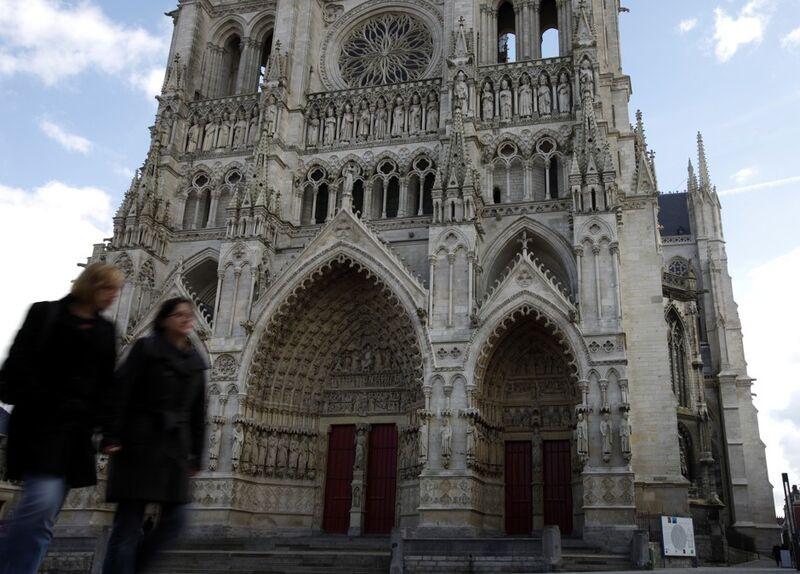This Is Your Brain on Architecture
Curated from: bloomberg.com
Ideas, facts & insights covering these topics:
8 ideas
·611 reads
4
Explore the World's Best Ideas
Join today and uncover 100+ curated journeys from 50+ topics. Unlock access to our mobile app with extensive features.
The Walls Around Us
Several years ago, Sarah Williams Goldhagen, an architecture critic, became interested in new research on how our brains register the environments around us. Dipping into writing from several fields—psychology, anthropology, linguistics, and neuroscience—she learned that a new paradigm for how we live and think in the world was starting to emerge, called “embodied cognition.”
13
127 reads
Where You Are Matters
Much of what and how people think is a function of our living in the kinds of bodies we do. Not just conscious thoughts, but non-conscious impressions, feedback from our senses, physical movement, and even split-second mental simulations of that movement shape how we respond to a place. And in turn, the place nudges us to think or behave in certain ways.
12
82 reads
Bathing Under A 150 Foot Ceiling
Architects intuited some of these principles long ago.
The monumental Baths of Caracalla in Rome, a person can bathe under an eight-foot ceiling, but there’s something about a 150-foot ceiling that makes a man a different kind of man.
However, this new science of architecture and the built environment is destined to have a profound effect on the teaching and practice of design over the next generation..
12
86 reads
People Live in Bodies, Bodies Live in Spaces
We’ve had in the last 20 years a kind of ocean of new information about how the brain actually works. Most of that was confirming the precepts of embodied cognition, and also going beyond it in certain ways, showing how multisensory our apprehension of the environment is.
What we now know about human cognition and perception, the built environments we inhabit are drastically more important than we ever thought they were.
12
72 reads
The City Life
Cities undervalue the importance of the design of the built environment altogether. There is this sort of professional split between high architecture and building, which research shows is just fallacious. It’s all architecture and it’s all important, because it’s all having an impact on people all the time.
Very often in cities, the overall form of buildings is given much more priority than materials, surfaces, textures, and details. What we know about the way we appropriate and experience places is that the overall form of a place is not what most dramatically affects our experience of it.
12
65 reads
Designs Without Soul
Architects tend, particularly with parametric design, to emphasize overall aggregate form, and all that other stuff gets filled in later. And then, very often, it’s value-engineered out.
That’s what’s creating a lot of the impoverishment in the environment. To have “sticky” places—places that engage you, your sensory system, your motor system, [and] help you create a sense of identification with [them]—you have to have all those things, and most buildings don’t.
13
67 reads
We Understood Environmental Concerns Too Late
When I was really young kid, nature was nature. It was forests, trees, lakes, rivers. Then people begin to use the word “environment.”
It was a political and social construct, and emphasized the interrelatedness of all these different components within nature. That was a response to pesticides, air pollution, and so on.
Now, kids get education in the environment from the time they’re in first grade. They start learning about climate change, visit waste treatment plants. That’s the kind of paradigm shift that needs to happen about the built environment.
14
54 reads
Saving Ourselves With Better Architecture: What Needs To Be Done
One, architectural education. Two, real-estate development. Three, building codes, zoning codes, all these things need to be reviewed according to these kinds of standards. Four, architects need to not be so skittish in thinking about human experience and learn more about it.
It’s a much larger problem than just, “Architects should do better.” It’s not a professional disciplinary problem, it’s a larger social problem. We also need more research.
13
58 reads
IDEAS CURATED BY
CURATOR'S NOTE
The buildings around us affect our body, mind and emotions.
“
Melissa Cervantes's ideas are part of this journey:
Learn more about artsandculture with this collection
Leonardo da Vinci's creative process
How to approach problem-solving like da Vinci
The importance of curiosity and observation
Related collections
Similar ideas
5 ideas
6 ideas
Protecting Business Against Pandemic
bloomberg.com
11 ideas
11 Things to Do for a Good Night
thekitchn.com
Read & Learn
20x Faster
without
deepstash
with
deepstash
with
deepstash
Personalized microlearning
—
100+ Learning Journeys
—
Access to 200,000+ ideas
—
Access to the mobile app
—
Unlimited idea saving
—
—
Unlimited history
—
—
Unlimited listening to ideas
—
—
Downloading & offline access
—
—
Supercharge your mind with one idea per day
Enter your email and spend 1 minute every day to learn something new.
I agree to receive email updates








